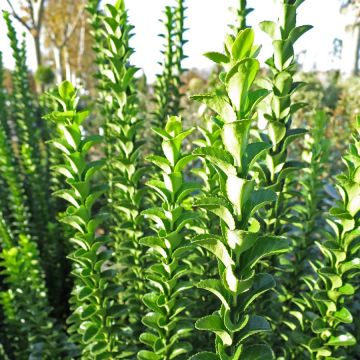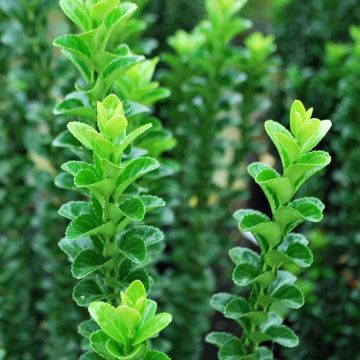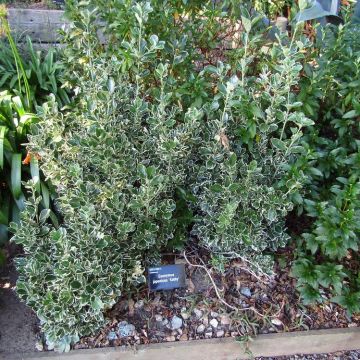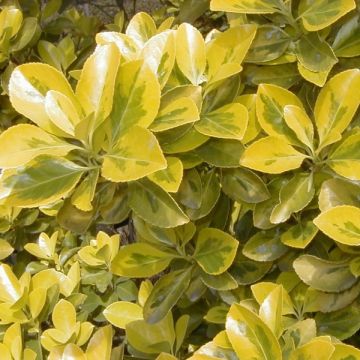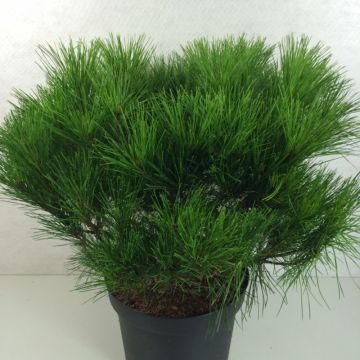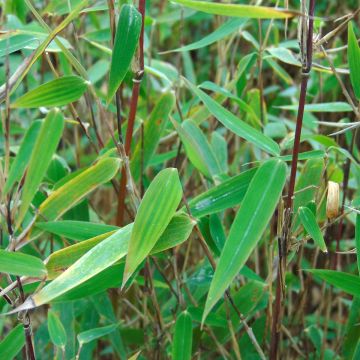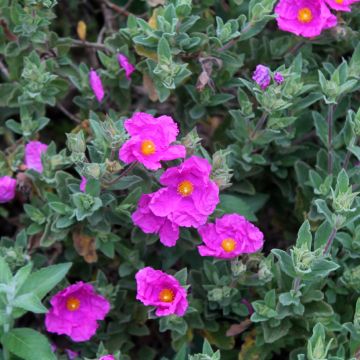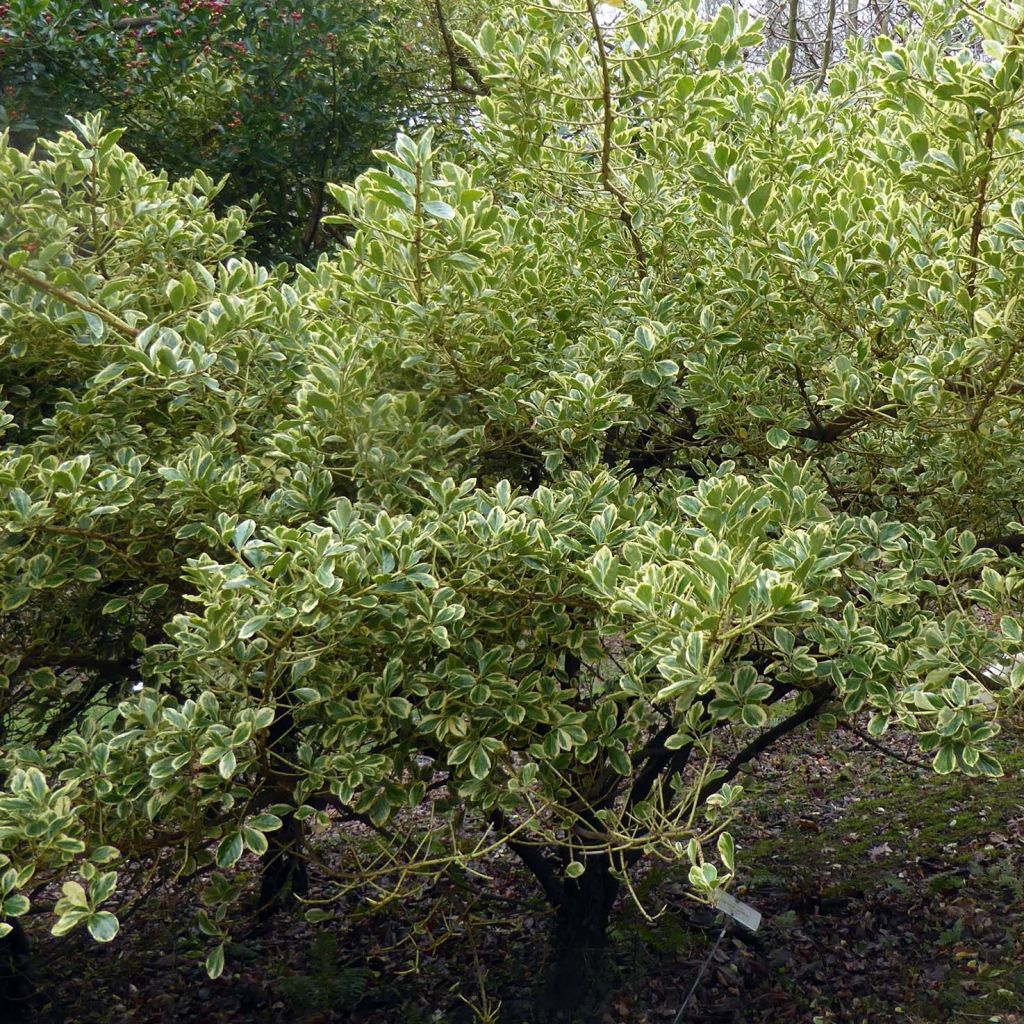

Euonymus japonicus Duc d'Anjou
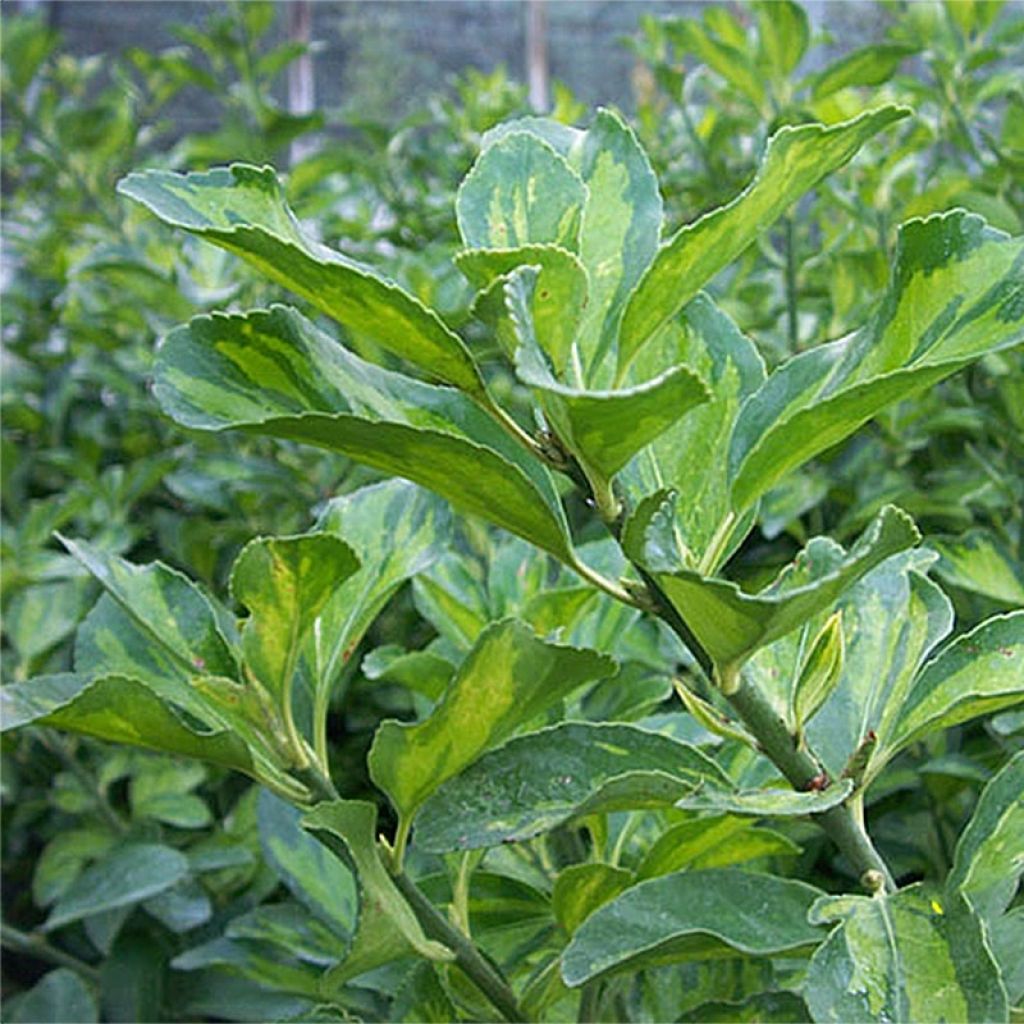

Euonymus japonicus Duc d'Anjou


Euonymus japonicus Duc d'Anjou
Euonymus japonicus Duc d'Anjou
Euonymus japonicus Duc d'Anjou
Fusain du Japon
This item cannot be shipped to the selected country
Delivery charge from €5.90
More information
Schedule delivery date,
and select date in basket
This plant carries a 24 months recovery warranty
More information
We guarantee the quality of our plants for a full growing cycle, and will replace at our expense any plant that fails to recover under normal climatic and planting conditions.
From €5.90 for pickup delivery and €6.90 for home delivery
Express home delivery from €8.90.
Does this plant fit my garden?
Set up your Plantfit profile →
Description
The Euonymus japonicus Duc d'Anjou is a variety of Japanese Spindle that has many advantages. Resistant to cold, with a moderate, well-dense growth, rather erect, this bush displays an elegant evergreen foliage, shiny, irregularly variegated with light green and yellow, decorative all year round. There are plenty of reasons to adopt it in a free or trimmed hedge, in the background of flower beds or in a container on the terrace, including in coastal areas, small city gardens or rather cold regions!
The Duc d'Anjou Japanese Spindle belongs to the Celastraceae family. Its ancestor is originally from Japan, as its name suggests. But it is also found in China and Korea. In nature, this large bush grows on slopes, in open areas on the edge of forests, up to the seaside where it can become a tree up to 8m (26 ft 2 in) tall. Its hardiness is around -12°C (10.4 °F), and its growth is quite slow.
The 'Duc d'Anjou' cultivar, with a more compact growth, is also distinguished by better cold resistance and leaves with a center more or less irregularly margined with darker green. In our gardens, it will reach an average height of 2m (6 ft 7 in) with a spread of 1.50m, perhaps more if not regularly pruned. Its habit is naturally dense and bushy, rather upright. Well-branched from the base, its upright branches bear dense foliage, composed of shiny, tough and rigid leaves. They are ovate in shape, 3 to 7cm (1.2 to 2.8 in) long, finely toothed at the edges. The flowering, quite discreet, takes place in May-June, at the tips of young shoots. Tiny flowers with 4 greenish-white petals are clustered together. They are pollinated by insects and are followed by the formation of small green fruits that turn pink and orange in autumn, hanging under the branches.
The Duc d'Anjou Japanese Spindle is valuable for creating medium-sized persistent hedges, either free or occasionally pruned. It can also be used in shrub beds, playing on contrasts with bronze fennels, purple barberries, or even bush roses or ground cover roses. It blends well with other shrubs with dark foliage such as small conifers, boxwood, and yew. In the background of flower beds, its variegated foliage enhances all flowerings and works wonders in partially shaded areas of the garden. Well adapted to coastal areas and city gardens, the Japanese Spindle can be used to create hedges along paths or to surround a rose bed, for example. It adapts well to container gardening, allowing for elegant and bright green screens on a terrace or balcony.
Report an error about the product description
Euonymus japonicus Duc d'Anjou in pictures


Plant habit
Flowering
Foliage
Botanical data
Euonymus
japonicus
Duc d'Anjou
Celastraceae
Fusain du Japon
Cultivar or hybrid
Other Japanese Spindle Trees - Euonymus japonicus
Planting and care
The Euonymus japonicus Duc d'Anjou is preferably planted in spring in any well-drained soil in a sunny or lightly shaded location. It prefers deep, rich soils that remain moist and tolerates the presence of limestone in the soil. It is susceptible to severe frost and is hardy up to approximately -12/-14°C (10.4/6.8 °F). The hot and dry climates of the southern part of our country are not suitable for this evergreen spindle tree, as it may become infested with mealybugs and sooty mold. Pruning is well tolerated between April and May. Caution: early spring pruning can be harmful to young tender shoots in case of late frost. Similarly, excessive pruning can lead to the development of sooty mold, especially in very dry soil. Apply fertilizer twice a year, in early spring and autumn. Water during drought to maintain beautiful foliage. If the plant is grown in a pot, it is necessary to change the growing substrate once a year in spring. Protect your pot if severe frost is forecast (<-5°C (23 °F)).
Planting period
Intended location
Care
This item has not been reviewed yet - be the first to leave a review about it.
Evergreen shrubs
Haven't found what you were looking for?
Hardiness is the lowest winter temperature a plant can endure without suffering serious damage or even dying. However, hardiness is affected by location (a sheltered area, such as a patio), protection (winter cover) and soil type (hardiness is improved by well-drained soil).

Photo Sharing Terms & Conditions
In order to encourage gardeners to interact and share their experiences, Promesse de fleurs offers various media enabling content to be uploaded onto its Site - in particular via the ‘Photo sharing’ module.
The User agrees to refrain from:
- Posting any content that is illegal, prejudicial, insulting, racist, inciteful to hatred, revisionist, contrary to public decency, that infringes on privacy or on the privacy rights of third parties, in particular the publicity rights of persons and goods, intellectual property rights, or the right to privacy.
- Submitting content on behalf of a third party;
- Impersonate the identity of a third party and/or publish any personal information about a third party;
In general, the User undertakes to refrain from any unethical behaviour.
All Content (in particular text, comments, files, images, photos, videos, creative works, etc.), which may be subject to property or intellectual property rights, image or other private rights, shall remain the property of the User, subject to the limited rights granted by the terms of the licence granted by Promesse de fleurs as stated below. Users are at liberty to publish or not to publish such Content on the Site, notably via the ‘Photo Sharing’ facility, and accept that this Content shall be made public and freely accessible, notably on the Internet.
Users further acknowledge, undertake to have ,and guarantee that they hold all necessary rights and permissions to publish such material on the Site, in particular with regard to the legislation in force pertaining to any privacy, property, intellectual property, image, or contractual rights, or rights of any other nature. By publishing such Content on the Site, Users acknowledge accepting full liability as publishers of the Content within the meaning of the law, and grant Promesse de fleurs, free of charge, an inclusive, worldwide licence for the said Content for the entire duration of its publication, including all reproduction, representation, up/downloading, displaying, performing, transmission, and storage rights.
Users also grant permission for their name to be linked to the Content and accept that this link may not always be made available.
By engaging in posting material, Users consent to their Content becoming automatically accessible on the Internet, in particular on other sites and/or blogs and/or web pages of the Promesse de fleurs site, including in particular social pages and the Promesse de fleurs catalogue.
Users may secure the removal of entrusted content free of charge by issuing a simple request via our contact form.
The flowering period indicated on our website applies to countries and regions located in USDA zone 8 (France, the United Kingdom, Ireland, the Netherlands, etc.)
It will vary according to where you live:
- In zones 9 to 10 (Italy, Spain, Greece, etc.), flowering will occur about 2 to 4 weeks earlier.
- In zones 6 to 7 (Germany, Poland, Slovenia, and lower mountainous regions), flowering will be delayed by 2 to 3 weeks.
- In zone 5 (Central Europe, Scandinavia), blooming will be delayed by 3 to 5 weeks.
In temperate climates, pruning of spring-flowering shrubs (forsythia, spireas, etc.) should be done just after flowering.
Pruning of summer-flowering shrubs (Indian Lilac, Perovskia, etc.) can be done in winter or spring.
In cold regions as well as with frost-sensitive plants, avoid pruning too early when severe frosts may still occur.
The planting period indicated on our website applies to countries and regions located in USDA zone 8 (France, United Kingdom, Ireland, Netherlands).
It will vary according to where you live:
- In Mediterranean zones (Marseille, Madrid, Milan, etc.), autumn and winter are the best planting periods.
- In continental zones (Strasbourg, Munich, Vienna, etc.), delay planting by 2 to 3 weeks in spring and bring it forward by 2 to 4 weeks in autumn.
- In mountainous regions (the Alps, Pyrenees, Carpathians, etc.), it is best to plant in late spring (May-June) or late summer (August-September).
The harvesting period indicated on our website applies to countries and regions in USDA zone 8 (France, England, Ireland, the Netherlands).
In colder areas (Scandinavia, Poland, Austria...) fruit and vegetable harvests are likely to be delayed by 3-4 weeks.
In warmer areas (Italy, Spain, Greece, etc.), harvesting will probably take place earlier, depending on weather conditions.
The sowing periods indicated on our website apply to countries and regions within USDA Zone 8 (France, UK, Ireland, Netherlands).
In colder areas (Scandinavia, Poland, Austria...), delay any outdoor sowing by 3-4 weeks, or sow under glass.
In warmer climes (Italy, Spain, Greece, etc.), bring outdoor sowing forward by a few weeks.



































